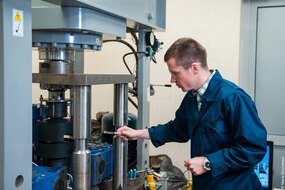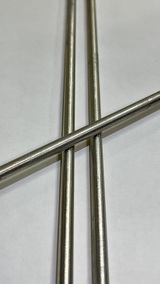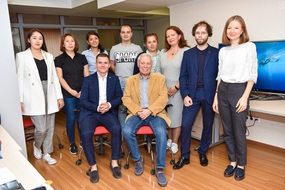Based on the experiments, scientists from NUST MISIS have identified a methodology that improves the balance of strength and ductility of the biodegradable magnesium alloy used in biomedicine, particularly for maxillofacial implants. The peculiarity of the material lies in the fact that after the operation, it gradually dissolves in the human body. Fixing elements (screws, pins, plates, etc.) made of magnesium alloy are completely replaced by newly formed tissue, eliminating the need for a second operation to remove temporary elements from the human body. In recent years, researchers have been interested in the magnesium, zinc, and gallium alloy (Mg-Zn-Ga). The addition of zinc and gallium improves the mechanical and corrosion properties, allowing the integrity of the implant to be maintained for a certain period necessary for the healing process. Zinc contributes to the strengthening of the material, while gallium enhances its ductility, imparts antimicrobial properties, and increases bone tissue density. Due to its characteristics, this alloy is much closer to human bone tissue than titanium.
“Magnesium alloys belong to the group of materials with good biocompatibility. They cause minimal side reactions when in contact with body tissues. The advantage of magnesium lies in its modulus of elasticity close to human bone, reducing the risk of bone density reduction due to high loads on the implant,” noted Alexander Komissarov, Ph.D., head of the Hybrid Nanostructured Materials Laboratory at NUST MISIS.
The Mg-Zn-Ga alloy holds promise for application in biomedicine, but scientists claim that further research is necessary to ensure the material’s safety.
“It is important to prevent the formation of toxic compounds during the decomposition of biodegradable metals. Usually, magnesium, zinc, and gallium pose no danger to the body. However, the corrosion process of magnesium is accompanied by hydrogen release, which can lead to the formation of gas pockets around the implant. Our task is to minimize this negative impact,” said Anna Lee, Ph.D., an engineer at the Hybrid Nanostructured Materials Laboratory at NUST MISIS.
During the study, scientists established that the most effective way to improve the mechanical properties and durability of the biodegradable Mg-Zn-Ga alloy is hot extrusion followed by drawing, i.e., extruding molten metal at high speed through a narrowing orifice in a specialized press. The medical partners of the project include the Russian University of Medicine of the Ministry of Health of Russia and the National Medical Research Center for Traumatology and Orthopedics named after N.N. Priorov. Details are described in the scientific journal Results in Materials (Q2). The research was carried out with financial support from the Russian Ministry of Science and Higher Education mega-grant (No. 075-15-2022-1133). Currently, under a licensing agreement, development is being prepared for industrial implementation at the technological base of an industrial partner.






